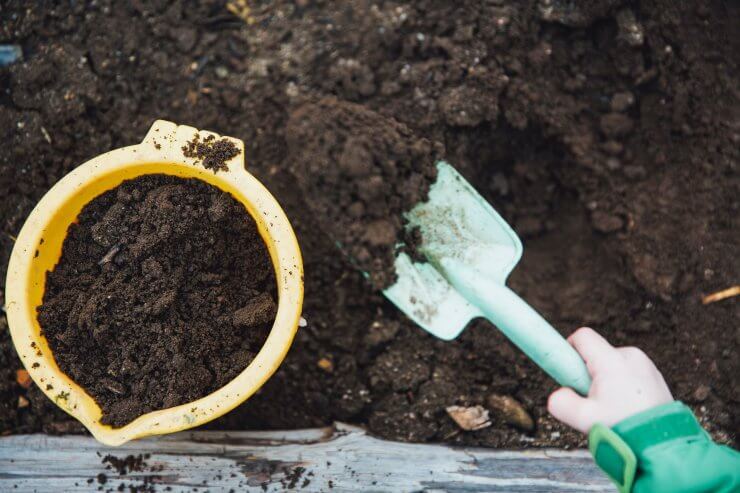
Container vegetable gardens are the versatile champions of any garden. I love container gardens because you can start them indoors and transition them outdoors without disrupting the vegetable roots. They’re ideal for small spaces, porches, balconies, and even that sliver of side yard you might have that gets great sun exposure but is too small for a garden bed. The key to a successful container garden is your potting medium. There are many different store-bought varieties of potting soil and potting mix, but in my opinion, the best potting soil for container vegetables is a hand mixed.
Not only will you save money, but you’ll be able to tailor mix your own potting soil based on the type of vegetables you are planting in it. You’ll also never wonder what is in your mix since you hand-selected all of its ingredients.
Discover 7 top tips for growing, harvesting, and enjoying tomatoes from your home garden—when you access the FREE guide The Best Way to Grow Tomatoes, right now!

Garden Safety
I know it seems like overkill, but mixing potting soil and potting mix is just like any other science experiment and safety is important. To avoid the risk of exposure to bacteria that may be living in your potting mix ingredients, it’s a good idea to wear a protective face mask and safety goggles. This will help you avoid inhaling dust and other organic particles. Gardening gloves and protective clothing are important too, to prevent skin irritation. Of course, it probably goes without saying that good hand washing routines before and after gardening are an important step at protecting yourself and your loved ones from any bacteria and allergens.
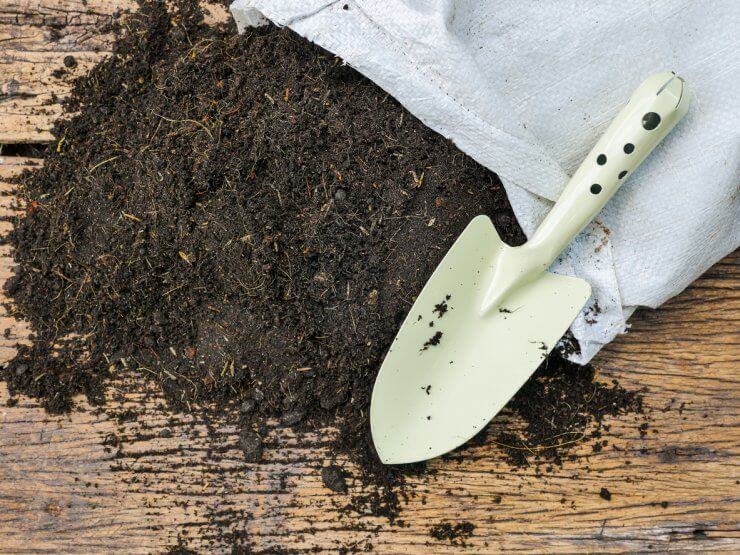
Potting Soil or Potting Mix?
You may notice the terms “potting soil” and “potting mix” used interchangeably at your garden store, but there is a difference. Simply put, potting soil contains dirt and potting mix doesn’t. The challenge with using potting soil for container garden vegetables is that too much dirt can create too compact an environment for vegetable roots to grow. Compact soil can also deter air and water circulation.
The key to successful potting mix and potting soil for container vegetables is making sure there are other elements added to keep your mix light and airy while still retaining moisture and remaining nutritional.
Here are some elements (and their recommended proportions) to consider adding to your homemade potting soil for container vegetables:
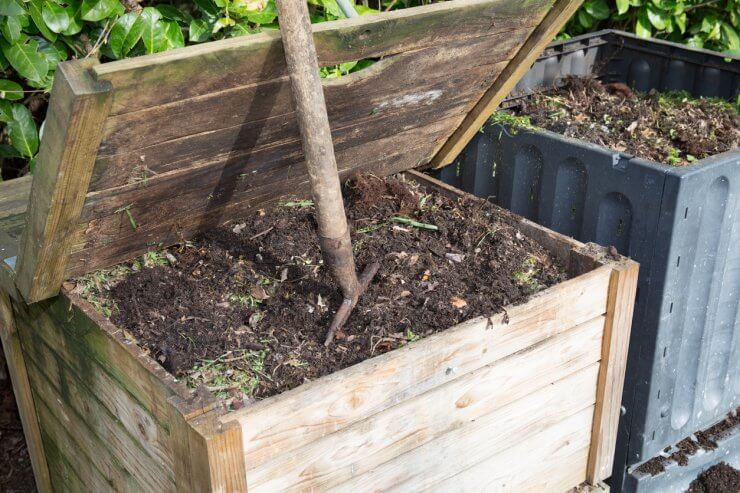
Mature Compost (2 parts)
Homemade compost is ideal if you have it, but you can also purchase organic compost. The key to prepping your compost for potting mix for container vegetables is passing it through a sieve of some kind to remove larger chunks from your mix. You can actually buy mature compost on Amazon.
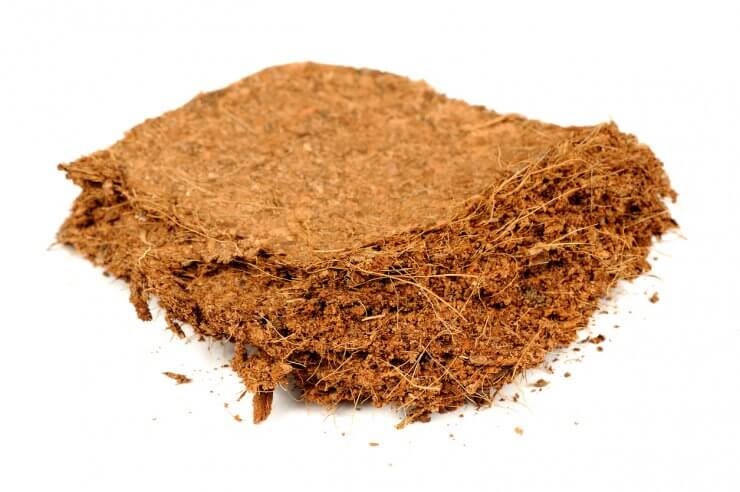
Coconut Coir or Coir Peat (1 part)
Coco-coir, Coconut Coir, or Coir Peat is all the same thing and is a great, eco-friendly peat product made from the husk fibers of coconuts. Regular peat moss has some not-so-eco-friendly harvesting practices which should be considered before use. The trick with coconut coir is to pre-soak for at least 15 minutes before pulling apart and adding to your mix. Coco coir is a great moisture retention element in your potting soil for container vegetables, and also allows for good air circulation. Buy it on Amazon.
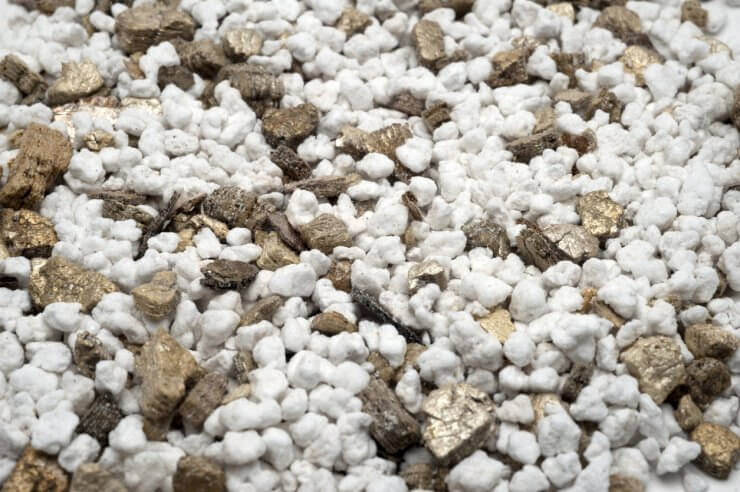
Vermiculite and/or perlite (1 part)
Vermiculite and perlite are super lightweight puffy particles derived from volcanic rock and have great water-retaining qualities. Naturally non-toxic and sterile, vermiculite and/or perlite are a great addition to your potting soil for container vegetables. Look for Grade 3 which is particles of approximately 3-6mm in size. Vermiculite and perlite are great ingredients in potting mix for container vegetables since they promote quick root growth and help anchor new roots. You can swap out vermiculite and perlite for sand if you’d like, but be sure to use garden-grade sand and not construction or play sand, since those have impurities like salt that can affect your potting mix. Buy vermiculite and perlite on Amazon.

Worm Castings (1 cup-ish*)
If you do your own worm composting, then you’re ahead of the game, here! You can buy worm castings as well. Worm castings are rich in minerals like potassium, magnesium, phosphorus, and calcium. They also help vegetables and other plants retain moisture.
* You really can’t use too much worm castings. It won’t damage your plants. You can even sprinkle worm castings around the base of your vegetables when they sprout from your containers. Buy worm castings on Amazon.
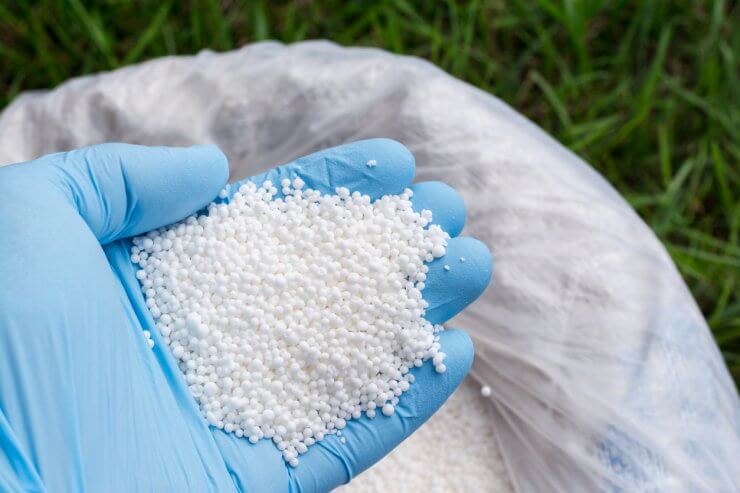
Other nutrients/additives for potting soil for container vegetables
You can add fertilizers and other minerals while you’re mixing your batch of potting soil. You could also wait and add as needed depending on the types of vegetables you are planting. Adding them all at once saves you time. Waiting to add what you need will allow you to tailor the potting mix to the specific seed or seedling. It really depends on what type of vegetables you are planting and whether you are making a larger batch for storage.
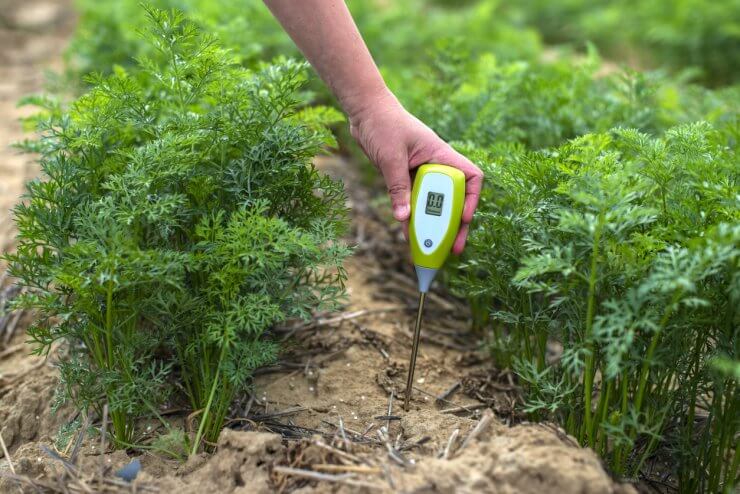
Test, plant, and store
Once your potting soil for container vegetables is mixed, check the pH with a meter or testing kit. Then check it again in a few days. After that, you’re ready to plant vegetable seedlings or seeds in your containers. Store your potting mix for container vegetables in something with a well-fitted lid that can help reduce moisture loss.
Do you have a tried-and-true potting soil or potting mix recipe that you use for your container vegetables? Share it in the comments!
Note: Food Gardening Network contains links to affiliate websites including Amazon and Rakuten Affiliate Network and we may receive a commission for any eligible purchases made by you through links on this page.
Discover 7 top tips for growing, harvesting, and enjoying tomatoes from your home garden—when you access the FREE guide The Best Way to Grow Tomatoes, right now!





When growing my tomatoes they grow beautifully but doesn’t produce any tomatoes what do I need to do ?
The typical causes for beautiful foliage but no fruit are poor pollination or too much nitrogen in fertilizer. Poor pollination can occur if there is too much heat and humidity when the flowers set or just the opposite, extremely dry conditions. Try to keep your plans evenly moist (try a soaker hose) and use a fertilizer specifically formulated for tomatoes.
I can not use anything with coconut or any chemicals, because of an auto immune disease. How can I grow a garden indoors in winter; so I can retranfer them outside in the summer? It needs to be all organic substance with no chemicals. I have no idea where to start. Any suggestions would be helpful.
Thank you,
Susan Mckenrick
Susan – we have some great organic posts. Check out this link for some ideas.
https://foodgardening.mequoda.com/?s=organic
I just want to buy potting soil for the containers that are 6pcs 17×7.2in. How big a bag and what kind Miracle Grow Potting Mix or Miracle Grow Potting Soil do I buy? I am looking online and some say qt, and others say cubic ft, I really don’t know what I am doing now. Please help! This is to start seeds in the house and put them in the garden later.
Measure your pots and multiply the length, width and height to get a rough calculation of cubic ft. Keep in mind that you don’t need to fill your pots to the very top. 1 cubic foot of soil is ~30 quarts.
If you leave out the manure (as mentioned in a comment above), what is feeding your vegetables?
My husband and I like to plant fruit trees at our rentals. We had some in Cumberland, MD, where the houses are circa. 1880-1920 when most of the city was built. Most have lead paint so I tested the soil in the back yard before planting the tree because the balconies had lead paint which rain drained from into the yard. Sure enough, lead contaminated soil! Be sure you test if you live in a neighborhood 1978 or older because lead paint was used for trim and everywhere we now use exterior and oil based paint or semi-gloss/gloss. Lead really messes up children AND is irreversible (which is why the government makes us test for lead in rental housing). Love all the info here. Have a blessed day gardening!!
I have bought potting soil with fertilizer in the soil. That feeds for 9 months. Do I still fertilizer my vegetables?
How many parts potting mix to add the 2 compost, coir, vermiculite and worm castings?
You don’t actually add any dirt to this, if that’s what you’re wondering, the potting “soil” is a mix of these ingredients alone.
I live in South Africa. Is your posts relevant to our climates too.
For years, I have mixed potting mix, cow manure (bagged) and peat moss together. To a large bag of potting mix,I probably use not quite a 1/4 bag of manure and a couple of really big handfuls of peat moss. I mix it in a black trash can with lid. I also mix it half a bag of potting mix etc at a time. Easier to mix up. If I don’t use all the mix at one time, I put the rest with top on can in the garage so it is not in the sun. If a plant needs something else, then I add it for the plant.
I like your site. I love gardening, we live in northern Arizona and have very short growing season. What can you suggest in veggie gardening!!
Thanks so much Mick! We actually get this question a lot, so we wrote a whole post about it here:https://foodgardening.mequoda.com/daily/vegetable-gardening/vegetables-for-hot-dry-climates-a-zone-9-planting-guide/
I hope you find that helpful!
@Amanda, it’s a common misconception to think of all of Arizona as hot and dry. Mick’s situation is likely different as he mentioned living in northern Arizona where the climate is much different than Phoenix and Tuscon.
The elevation in the north generally ranges from 6,000′ to 7,000′ (give or take) and is considered zone 6 to 7. The winters are cold and snowy and the summer growing season is short.
What would you suggest in this case?
Having come from zone 5, I think the best bet would be cold frames, growing tunnels or a greenhouse to protect and extend the growing season… Creating a drip system with rain barrels will help with the watering…
I see some mixtures say to use manure. Do I really need this ?
Nope! I have plenty of friends who skip it entirely, and I’ve skipped it in the past as well. I find there’s a difference but not huge.
You can skip it but if you want healthy vegetables that taste good it’s recommended. I use horse manure. This sounds gross but when the plants are young you can take urine (free), and water it next to the plants. It has high amounts of nitrates and they will grow fast, be much greener and healthier. Same as using manure but free. Test it and see. It was shocking.
Hello,
Your homemade potting soil recipe says to add coconut coir to the mix. I have recently purchased potting soil with mulch and peat moss added to it. Do I need to add coconut coir when my potting soil already has mulch and peat moss added to it?
Thanks
If you already have peat in your mix, you’re all set!